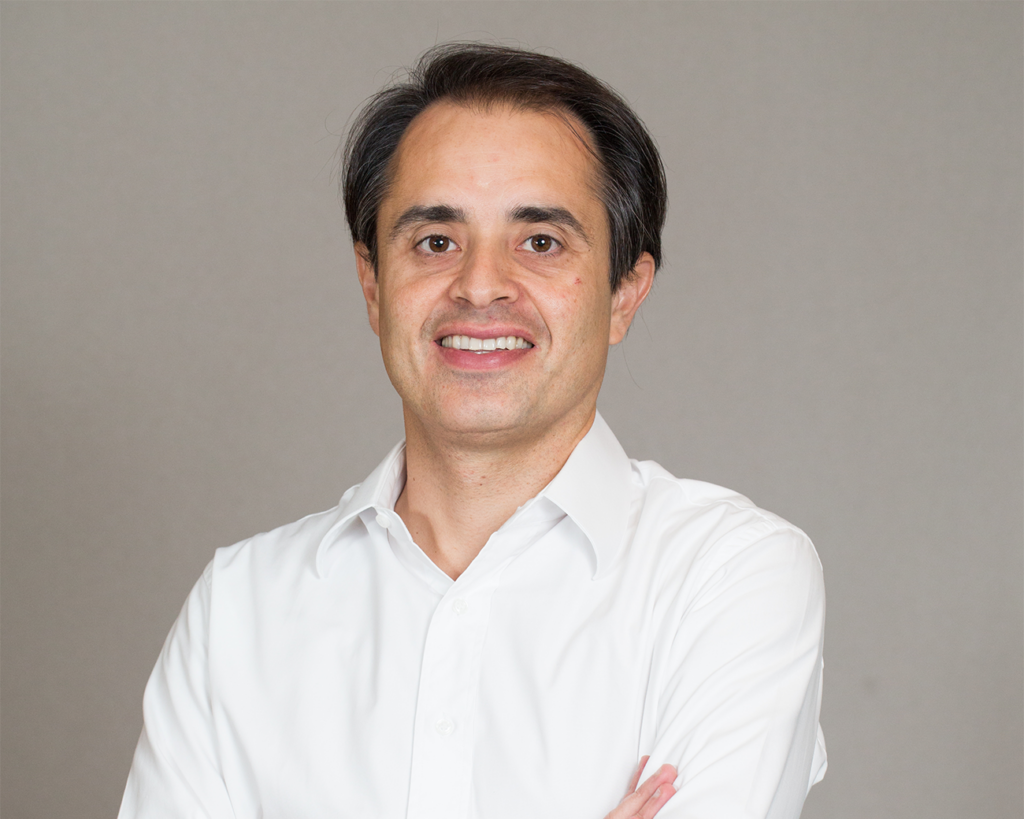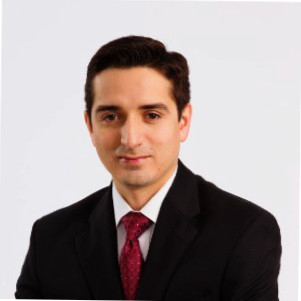Member Profiles
Craig Smith, President and CEO, Sigma Safi
28 July 2014

LAVCA spoke with fund manager Craig Smith, CEO of Peruvian Member firm Sigma SAFI, to learn more about their investments in infrastructure and why Peru is good market for private equity.
LAVCA: Please provide some background on Sigma SAFI. When was it founded? How many funds do you operate? What are your assets under management? What percentage of your AUM is focused on private infrastructure?
Smith: Sigma was founded by a group of bankers and traders at the end of 2005, and our first fund was launched in 2006. Our first fund was unique in that it is more of a fixed income fund dedicated to investing in machinery, vehicles, and equipment operating lease contracts for clients primarily in the infrastructure/construction and mining industries.
Sigma has accepted approximately US$650 million in commitments from what we believe were the highest value-added LPs and banks, always trying to give preference to the growing local private pension funds (AFPs). A few years later when the operating lease model proved sound, we received competing offers from local banks that wanted to diversify their corporate financing offering, and we selected Interbank for our second leasing fund. For the third fund, we did the transaction with Goldman Sachs, having been fully repaid at the end of 2013.
In one way or another, Sigma has been active in the infrastructure sector, either financing the earth moving and excavating equipment and heavy vehicles that build highways, roads, dams, ports, and airports, or participating via our private equity fund in the construction phase of some key energy and transportation projects, one of which (Rutas de Lima with Odebrecht) was recently placed as the single largest local currency bond in Peruvian history. Depending on the fund, we are most interested in renewable energy generation (mainly hydro and wind) and distribution, transportation (roads, ports, airports), logistics, construction.
LAVCA: You have said that part of your strategy is public and private partnerships. Why is that important and what value do you bring to these relationships?
Smith: We definitely need to see more PPPs in order to close the large infrastructure gap in Peru. The value Sigma offers potential partners is our focus on greenfield investing (in a country with few viable brownfield investment opportunities), Sigma´s long-standing and deep corporate and public sector relationships, and the importance and the quality of the LPs in our Infrastructure fund. We originate the investment opportunity with operators within a framework of trust and transparency, and we have been fortunate that our realistic investment requirements closely match those of our partners and their projects. We expect that the partners who build and operate keep their equity stakes as long as Sigma in order to keep them economically engaged in the project.
LAVCA: What makes Peru a good market for infrastructure investments? How has the investment environment changed or matured in Peru since Sigma SAFI was founded?
Smith: There are three main factors that make Peru an attractive market for Infrastructure:
- Enormous demand from both the private and public sectors for better quality infrastructure to continue to grow GDP efficiently at above 6% levels.
- Ample supply of long term financing in local currency and US dollars from domestic and international institutional lenders at very attractive levels (A3 rating by Moodys). Peruvian pension funds and insurance companies seek 25 to 30 year investment alternatives.
- The government´s willingness to auction long-term contracts to build and operate major infrastructure projects to private construction/operating companies, while ensuring long term commercial agreements in order to make the project financing possible.
The deals we see now are much larger, in line with growth in GDP. The economy and capital market, mainly debt, has grown significantly in size and scope since 2005. Asset management has consolidated and become a rapidly growing subset of the financial market, with funds participating in many important corporate buyouts, real estate development, infrastructure projects, and more.
LAVCA: Can you describe your ESG strategy?
Smith: Sigma evaluates each investment not only in terms of expected IRRs, but also takes into account the environmental and/or social impact of each project, and how the investment may fit the ESG interests of our LPs. We know that the AFPs are interested in encouraging their local GPs to make investments that both benefit Peruvian society with positive externalities, while generating a market return for their funds. We try to give these investments a higher priority and are willing to accept lower relative IRRs for investments that provide positive social benefits, either directly or indirectly via the creation of positive externalities.
LAVCA: Who have been your investors – local or global? What type?
Smith: Our investors include all of the local private pension funds, Cofide, ONP (public pension fund), Chilean family offices, insurance companies, and banks such as Goldman Sachs and Interbank.
We maintain a very close relationship with the AFPs, and they all invest in our LeasOp I and Infrastructure funds. While we maintain a very close relationship with Goldman, the fund expired at the end of 2013 and we are in negotiations to try to relaunch that leasing fund.
LAVCA: Please tell us about some of your portfolio companies.
Smith: We have taken a minority position in a toll road project Rutas de Lima, partnering with Odebrecht, with a total cost of close to US$1 billion. This project recently issued the largest local currency bond offering in Peruvian history (PEN 1.5B).
We have also invested in the first wind power plant in Peru with Cobra (ACS of Spain), and an energy transmission project for a large copper mine with Abengoa of Spain. We expect to do follow on investments in each of these deals during the remainder of this year, and three or four new investments with these and other interesting projects in our pipeline during the next 12 to 18 months.
LAVCA: What challenges have you faced in terms of the regulatory environment in Peru (if at all) and how do you work with local regulators?
Smith: Sigma is directly supervised by the SMV and indirectly by the SBS. The main challenge from the regulatory standpoint is the excessive and unnecessary delay in the review and approval process for new funds. We work closely with regulators in order for them to have a better understanding of Sigma and the different environments in which we operate.
LAVCA: What is the typical ticket size for your investments? Do you normally take controlling positions in companies or minority stakes? Why? How do you ensure proper governance?
Smith: With regard to our Infrastructure fund, we typically look for an ideal ticket size of US$40-50 million. Given the fact that we tend to look at both large and medium sized projects given the diversity of private and public infrastructure projects we are exposed to, we prefer to remain open to both minority and majority stakes. In either case, we partner with the developer, who is more often than not also the construction company (EPC) and the operator. Sigma will only consider an investment if our partners are established global infrastructure developers and operators. Typically, proper governance is ensured through the company bylaws and Sigma´s active participation on the board of directors.
LAVCA: What is your strategy for exiting your investments? Who are potential buyers?
Smith: Our strategy for exiting our investment requires identifying long-term investors who seek stabilized fixed rate opportunities including local and international pension funds, insurance companies, family offices, among others. We would also consider bundling and floating the assets on a public exchange as a few companies have already done very successfully (see Abengoa Yield´s successful US$720 million IPO on Nasdaq in June of this year).
LAVCA: Moving forward, do you have plans to expand beyond Peru?
Smith: Even though we have been tempted to look at other Latam countries, our focus is firmly set in Peru for the foreseeable future, as this is the market where we feel we can add the most value for investors and where we believe we should see some of the best regional investment opportunities over the next 10 years.
LAVCA: Why did you join LAVCA?
Smith: I have been attending LAVCA conferences for the last 4 or 5 years and have been impressed with how the association has grown in scope and importance. Asset managers in Peru have been very inward looking when seeking capital, given the size and growth of the local AFPs, but when Sigma breached the US$500 million in committed capital level, we knew our next step in fundraising would likely take us beyond the country´s borders. For this we felt we needed to get more involved with a regional organization like LAVCA, in order for us to gain a better understanding of global and regional fundraising opportunities.
You may be interested in...
-

Luciana Antonini Ribeiro, eB Capital
Executive: Luciana Antonini Ribeiro, Co-Founder and CIO Member Name: eB Capital Year...
-

Cristiano Gioia Lauretti, Kinea Private Equity
Member: Kinea Executive: Cristiano Gioia Lauretti, Head of Private Equity HQ: São...
-

Maria Pia Iannariello, MGM Innova Capital
LAVCA recently spoke with Maria Pia Iannariello, Co-Founder & COO of MGM Innova Capital,...
-

Rafael Ramirez, Portfolio Manager, Alaska Permanent Fund Corporation
LAVCA recently spoke with Rafael Ramirez, Portfolio Manager– Private Equity &...
